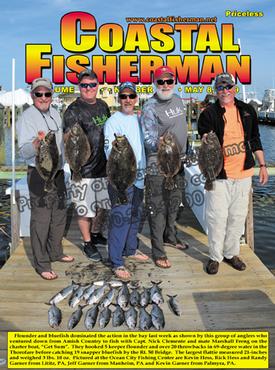


Article by Capt. Steve Katz
 Enlightening
Enlightening
In more ways than one, the recent advent of LED lighting has caused some issues when it comes to lighting your boat on the water.
To ensure the safety of recreational boaters, the United States Coast Guard has certain safety requirements for recreational boats that apply to all boats in the U.S. Many boats may have once met the USCG requirements when the boat was built and or initially inspected, but modifications and changes to the boat may have unintentionally caused its navigational lighting to fall out of compliance with navigation rules.
The Federal Government regulations that cover navigation lighting for boats in all U.S. states are detailed in The Code of Federal Regulations (CFR), Title 33 part 83. These rules also include International Regulations for Preventing Collisions at Sea 1972 (COLREGs). Title 33 is the portion of the Code of Federal Regulations that governs Navigation and Navigable Waters within the United States. Part 83 is the section that details Rules for navigation and includes lighting regulations in Rule 22 - Visibility of Lights.
Now that we know who’s in charge, let’s look at what the rules require. The regulations are very specific and at times seem to be dated by referring to “lanterns”, but make no mistake, these rules are current and monitored by law enforcement on all waterways. Navigation lights must meet many requirements such as:
•Vertical position and spacing
•Horizontal position and spacing
•Specifications for the chromaticity of each color
•Intensity
•Special cases for fishing, dredgers, underwater operations, high speed craft, etc.
•Approvals
While reading the CFR may not be interesting, many independent resources have narrowed down the information that is most relevant to pleasure boaters and made understanding the regulations easier in a few simple graphics.
One of the most critical details of the regulations is at the end of the requirements, but should be first on a boat owner’s inspection or shopping list. The fixture and light bulb combination must meet American Boat & Yacht Council (ABYC) standard A-16 to comply with USCG regulations. The A-16 standard is not source specific; it applies to incandescent and LED light sources. With the advent of inexpensive LED replacement bulbs and new suppliers to the market, boaters often mistakenly purchase products that do not meet the color, photometric, luminous intensity or cutoff (visibility angles) requirements established by ABYC’s testing procedures.
While that may seem like too much information to digest, shopping for a replacement light or reviewing your existing lighting is easy. Look for the A-16 approval or USCG 33 CFR 183.810 approval on the light fixture or packaging to assure that the light meets regulations. Select a light that meets the visibility distance based on your vessels length and install it in a proper location.
Yes, there is a point to all of this regulatory information above. Once you understand the regulations you will realize that buying a LED bulb and putting it into a navigation light fixture may render that navigation light non-compliant. Whether by mistake or knowingly, many boaters purchase bulbs or fixtures that are non-compliant. No matter how you use your boat, whether for pleasure, business, commercial fishing, charter operation or even whether it is an uninspected or inspected passenger vessel, having improper lighting could be a failure at a regulatory inspection or even a basis for liability in the event of an incident. Lighting has become a popular area for surveyors to scrutinize, thoroughly checking for compliance during a pre-purchase survey, insurance survey or accident investigation.
Another common lighting problem for boaters is the masthead light, anchor light or combination light. The rules are dependent on the vessel length, but in general, the light at the highest part of the vessel needs to be visible to other vessels in the prescribed direction. Oftentimes, there are changes made to the vessel such as radar, antennas, communication domes, life rafts, platforms, etc. that may block the visibility of the required lighting. If this is the case, most often just a relocation of the fixture is needed or a different fixture to accommodate the vessels current configuration. One popular misconception is that even if you don’t intend to anchor your boat it still must comply with anchor light requirements.
As many boaters know, navigation lights must be illuminated from sunrise to sunset, in restricted visibility and may be exhibited in all other circumstances when it is deemed necessary. It seems that during this same time, many boaters like to use decorative lighting on-board their boat. While not prohibited, rope lighting, underwater lighting and other various types of decorative lighting could violate navigation light provisions of the Nautical Rules of the Road. Specifically, decorative lights such as underwater lights, rub rail lighting or lights just above the waterline could be mistaken for navigation lights. This decorative lighting cannot impair the visibility or distinctive character of approved and properly placed navigation lights and the decorative light cannot interfere with the operator’s ability to maintain a proper lookout. The USCG points out that blue, underwater LED lights can appear to be flashing if there is any wave action, giving the appearance of a flashing blue light only authorized to be used by law enforcement vessels per 33 CFR 88.05.
Now is a good time to review your boats lighting to determine if it meets the regulations for your size and type of vessel and be sure other decorative lighting does not interfere with its operation.
Captain Steve Katz is the owner of Steve’s Marine Service and holds NMEA, AMEI and NMEA2000 certificates along with ABYC Master Technician certification and factory training from many manufacturers. To reach Steve, call 410-231-3191.